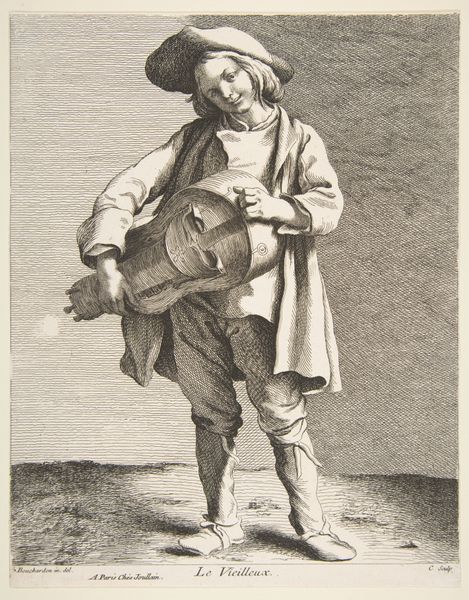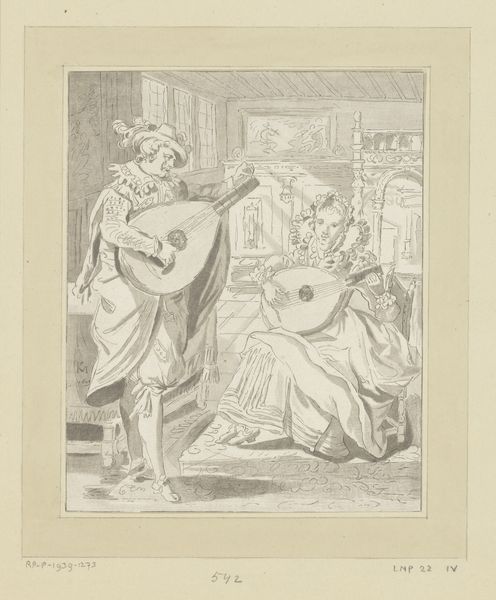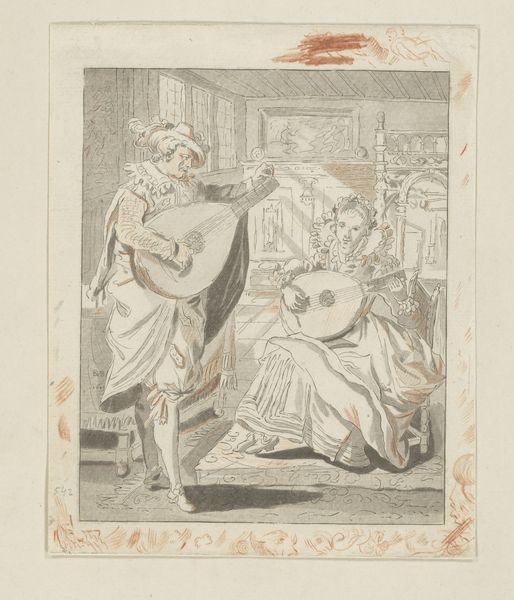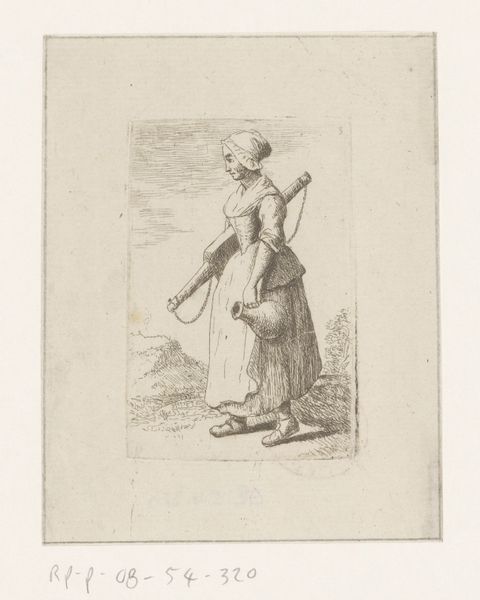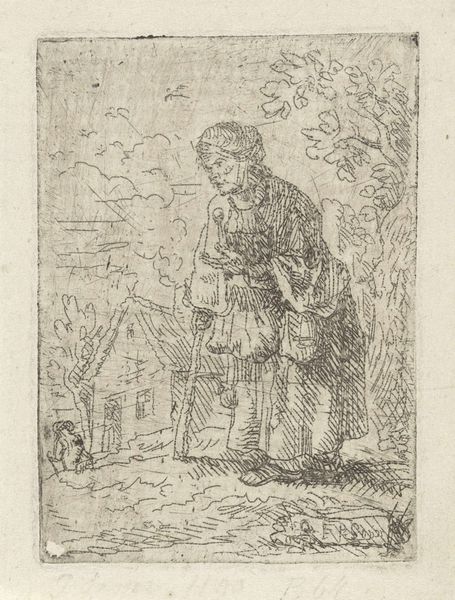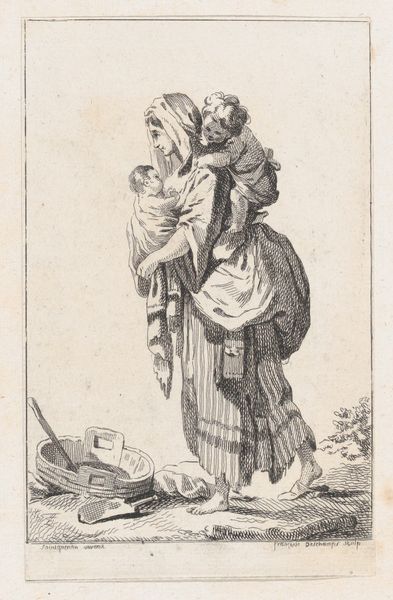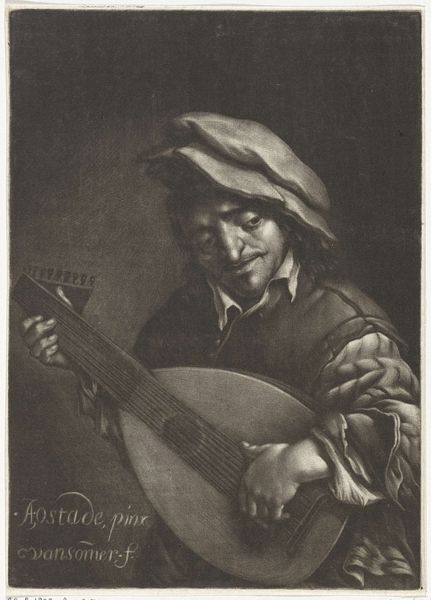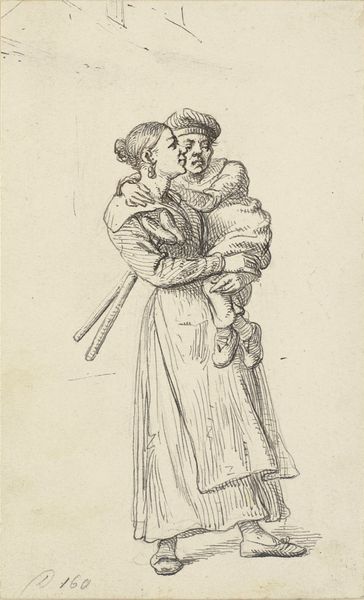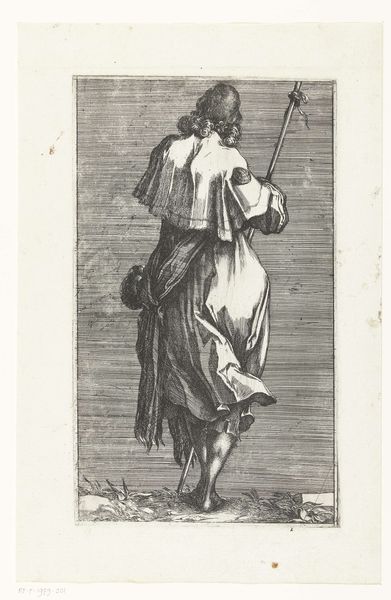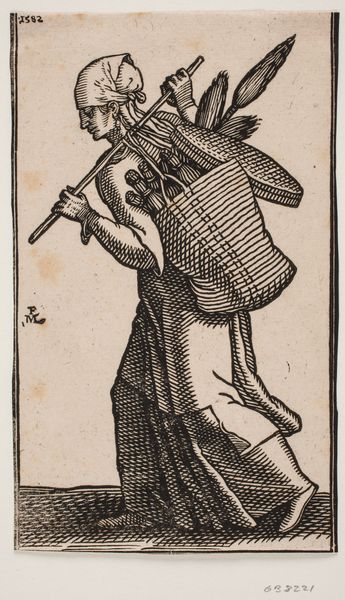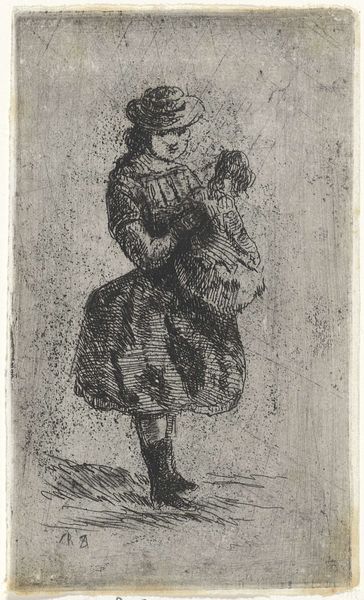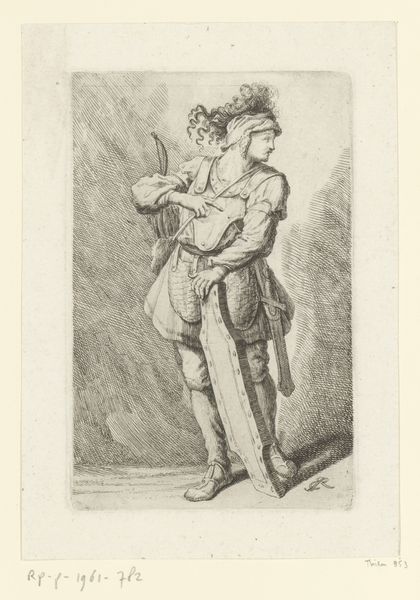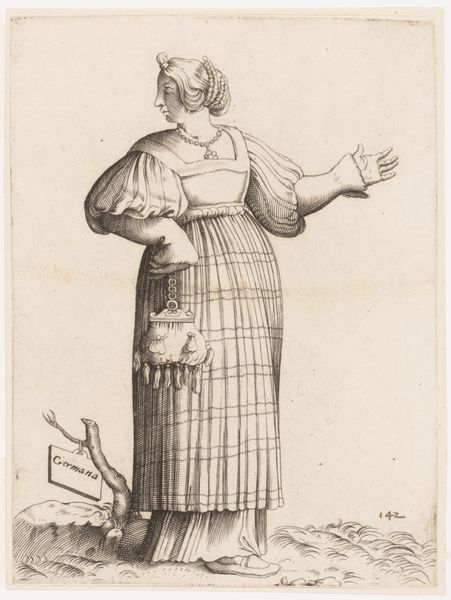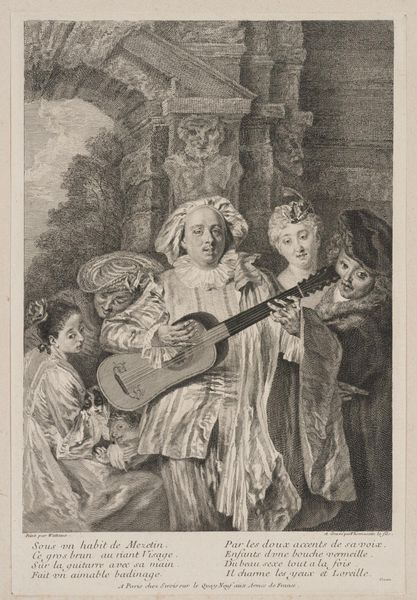
Dimensions: height 120 mm, width 80 mm
Copyright: Rijks Museum: Open Domain
Curator: What strikes you first about Anthonie van den Bos’ “Standing Musician with Hand Puppet and Lute,” crafted sometime between 1778 and 1838 with pen and ink? Editor: It’s the linear precision. Look how economically the artist conveys texture and form with simple, unshaded strokes. The composition draws my attention directly to the lute's circular shape against the musician's draped clothing. Curator: Indeed. Van den Bos created this drawing during a time of political and social upheaval. The portrayal of musicians, often marginalized figures, speaks to broader issues of representation and class within Dutch society. The hand puppet, whispering into the musician's ear, could symbolize the hidden voices of dissent, particularly when looking at intersectional dialogues concerning power and societal reform. Editor: Perhaps, but observe how that circularity repeats. It echoes in the puppet's rounded head and again in the musician's own face. It seems the artist's main consideration lies in pattern, not necessarily any social statement. Look how skillfully the vertical lines of the garments contrast with the circles. It's a visual game of repetition and contrast. Curator: The technique definitely plays a part. But consider, this drawing is from the Baroque period—a time of dramatic artistic expression. Genre paintings, which is another way we classify this drawing, often reflected daily life and societal mores. Are we really so far removed to see the symbolism embedded within? Think about the socio-political commentary that musicians would use through the craft. It provides insights into a culture negotiating its own identity, right? Editor: Possibly. But in terms of pure aesthetic value, I am more attuned to the drawing's composition as an exploration of form and balance. To see the drawing as just being related to political commentary denies the careful artistry within the visual choices. The semiotic relationship of each formal choice cannot be overstated. Curator: Ultimately, maybe it is both: careful visual and aesthetic choices imbued with social commentary of the period. Editor: Yes, maybe appreciating both allows us to draw our own conclusions about the work's power and message.
Comments
No comments
Be the first to comment and join the conversation on the ultimate creative platform.
